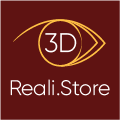Augmented reality is a technology that allows digital information to be overlaid onto the real world, through a screen or smart glasses. This technology is changing the way we perceive and interact with our environment, especially in our cities.
In this article, we will explore how augmented reality is transforming our cities, by offering new perspectives and new possibilities.
Augmented reality for better navigation
Augmented reality enables better navigation in cities by providing real-time information about points of interest, directions, transportation schedules, and other useful data.
Through augmented reality applications, pedestrians can easily find their way, even in neighborhoods they are unfamiliar with.
Drivers can also benefit from this technology by obtaining information about parking, gas stations, and charging points for electric vehicles.
Augmented reality for an enhanced tourist experience
Augmented reality can also enhance the tourist experience in cities by offering virtual tours and contextual information about historical sites, museums, and monuments. Visitors can learn more about the history and culture of the city in an interactive and immersive way.
Furthermore, augmented reality can be used to create customized tourist routes based on the preferences and interests of visitors.
Augmented reality for more effective urban management
Augmented reality can help city officials better manage urban infrastructure and services. For example, maintenance teams can use smart glasses to visualize maintenance plans for public facilities, construction plans, and emergency plans.
Similarly, local authorities can use augmented reality tools to track traffic flows, pollution levels, and other key data for urban management.
Augmented reality for immersive advertising
Finally, augmented reality offers opportunities for immersive advertising in cities, by overlaying digital advertisements on building facades or billboards. This advertising can be interactive, offering users the ability to play with the ads, share them on social media, or benefit from exclusive offers.
Augmented reality also allows advertisers to measure the impact of their advertising by collecting data on the number of people who interacted with the ads and their buying behavior.
Conclusion
In conclusion, augmented reality is a technology that is transforming our cities by offering new perspectives and possibilities for navigation, tourism, urban management, and advertising. Over time, augmented reality is expected to become more widespread in our cities, offering citizens increasingly rich and personalized experiences.


